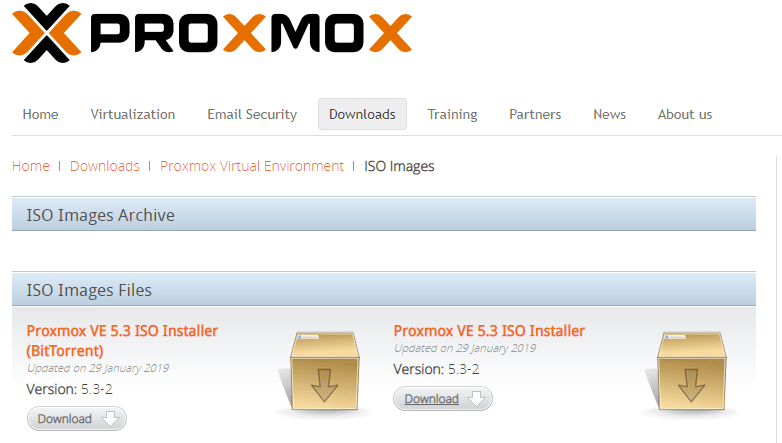Proxmox Server Solutions GmbH has announced the latest update to its open-source virtualization management platform, Proxmox VE 6.0. The latest version if the solution is based on Debian 10.0 Buster. The update adds bug fixes as well as support for Ceph Nautilus and Corosync 3.

What is Proxmox VE?
Proxmox VE is an open-source platform that is an alternative to the other popular enterprise virtualization platforms. Proxmox uses a web-based UI to enable users to run VMs and containers, manage software-defined storage and networking functionality, high-availability clustering, and multiple integrated out-of-the-box tools like backup/restore, live migration, replication, and the firewall. Proxmox states that its open architecture allows it to be more flexible for future adaptations. We recently did a fairly deep dive on installing the Proxmox VE Hypervisor.
New features and changes in Proxmox VE 6.0:
- Ceph Nautilus (14.2) and improved Ceph dashboard management: Proxmox VE allows to setup and manage a hyperconverged infrastructure with a Proxmox VE/Ceph-cluster. Version 6 integrates the features of the latest Ceph 14.2 release, and also brings many new management functionality to the web-based user interface. This includes: a cluster-wide overview for Ceph being displayed in the ‘Datacenter View’; a new donut chart visualizing the activity and state of the placement groups (PGs); the version of all Ceph services is displayed, making detection of outdated services easier; the configuration settings from config file and databases can be displayed; users can select the public and cluster networks in the web interface with a new network selector; encryption for OSDs can be activated easily during creation with a checkbox.
- Cluster communication stack with Corosync 3 using Kronosnet: with Proxmox VE 6.0 the cluster communication stack has been updated to Corosync 3 by which the on-the-wire format has changed. Corosync now uses unicast as default transport method. This provides a better control of failovers as different networks can now be prioritized. A new selection widget for the network is available in the user interface helping to choose the correct link address and preventing users from making typos.
- ZFS 0.8.1 with native encryption and SSD TRIM support: the new features for ZFS include enhanced security and data protection thanks to the added support for native encryption with comfortable key-handling by integrating the encryption directly into the `zfs` utilities. Encryption is as flexible as volume creation. TRIM support is included. The subcommand `zpool trim` notifies devices about unused sectors, thus TRIM can improve the usage of the resources and contribute to longer SSD life. Also checkpoints on pool level are available.
- Support for ZFS on UEFI and on NVMe devices in the ISO installer: the installer now supports ZFS root via UEFI, for example users can boot a ZFS mirror on NVMe SSDs. By using `systemd-boot` as bootloader instead of grub all pool-level features can be enabled on the root pool.
- QEMU 4.0.0: new QEMU functionalities are included in Promxox VE 6.0. Users can now use the web interface to live migrate guests with disks backed by local storage, and to set more VM CPU-flags. Support for more Hyper-V enlightenment has been added thus improving Windows performance in a virtual machine under QEMU/KVM.
- Custom Cloudinit configurations: Proxmox VE 6 brings support for custom Cloudinit configurations and lets users store it as Snippet. The command `qm cloudinit dump` can be used to get the current Cloudinit configuration as a starting point for extensions.
- Automatic clean-up of old kernel images: the old kernel images are no longer marked as ‘NeverAutoRemove’ which helps to prevent problems when /boot is mounted on a small partition.
- Guest status display in the tree view: Additional states for guests (migration, backup, snapshot, locked) are shown directly in the tree overview.
- Improved ISO detection in the installer: the way how the installer detects the ISO has been reworked to include more devices, alleviating problems of detection on certain hardware.
- Pool level backup: it’s now possible to create a backup task for a whole pool. By selecting a pool as backup target instead of an explicit list of guests, new members of the pool are automatically included and removed guests automatically excluded from the backup task.
- Automatic rotation of the authentication key every 24h: by limiting the key lifetime to 24h the impact of key leakage or a malicious administrator are reduced.
- The Node view in the user interface provides a faster syslog view.
Availability Of Proxmox VE 6.0
Proxmox VE 6.0 is available for download now in the link below




 Amazon
Amazon